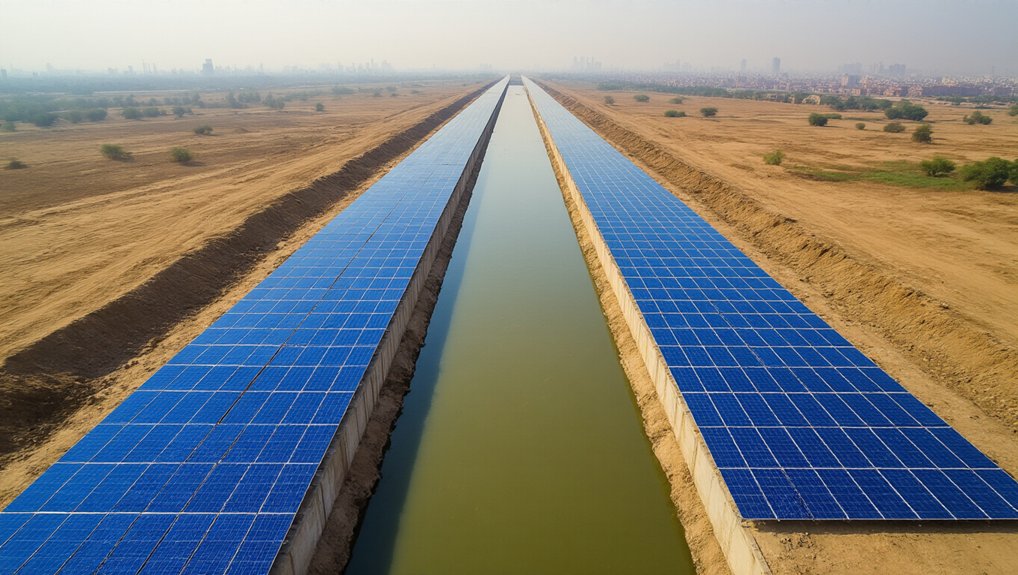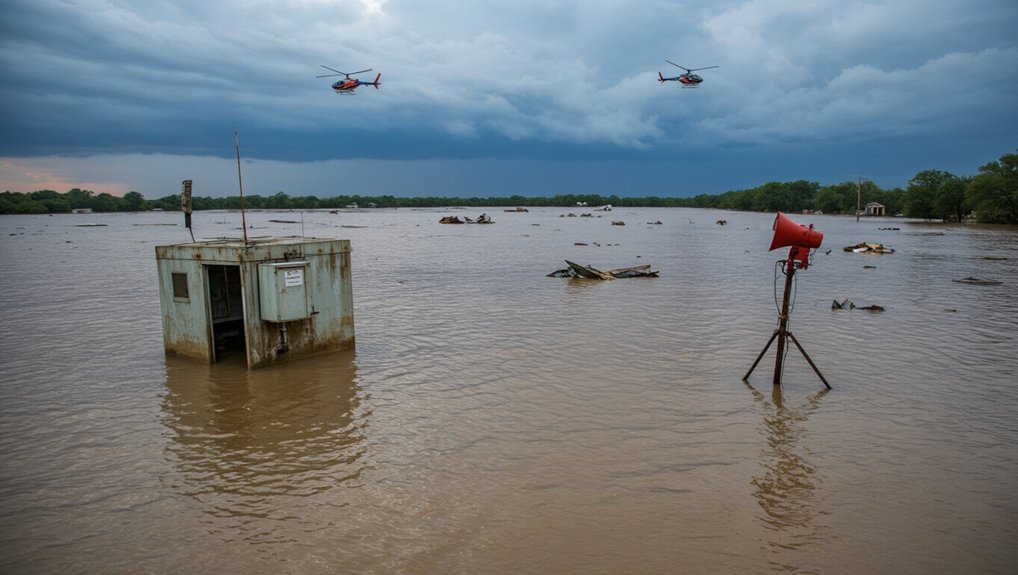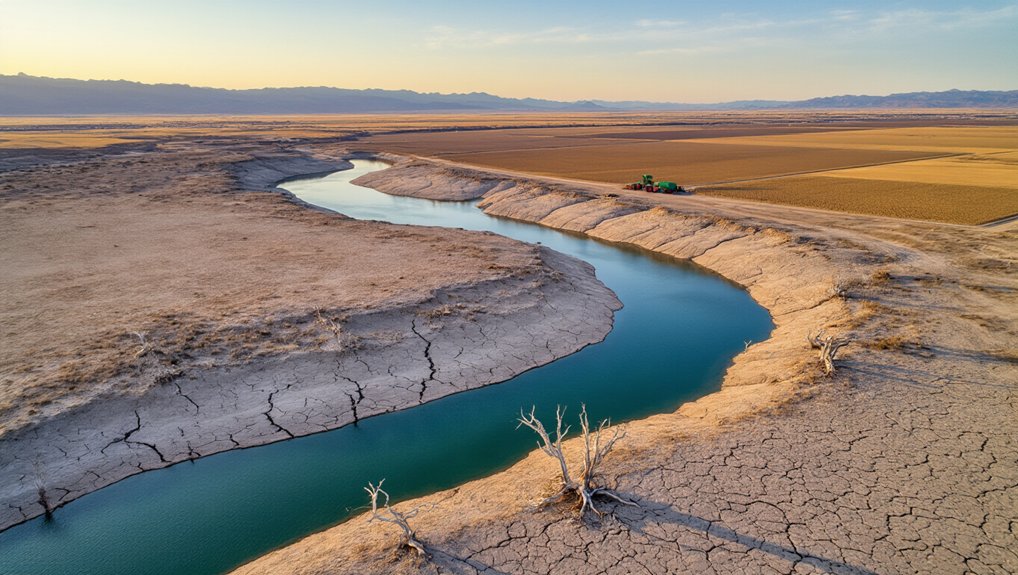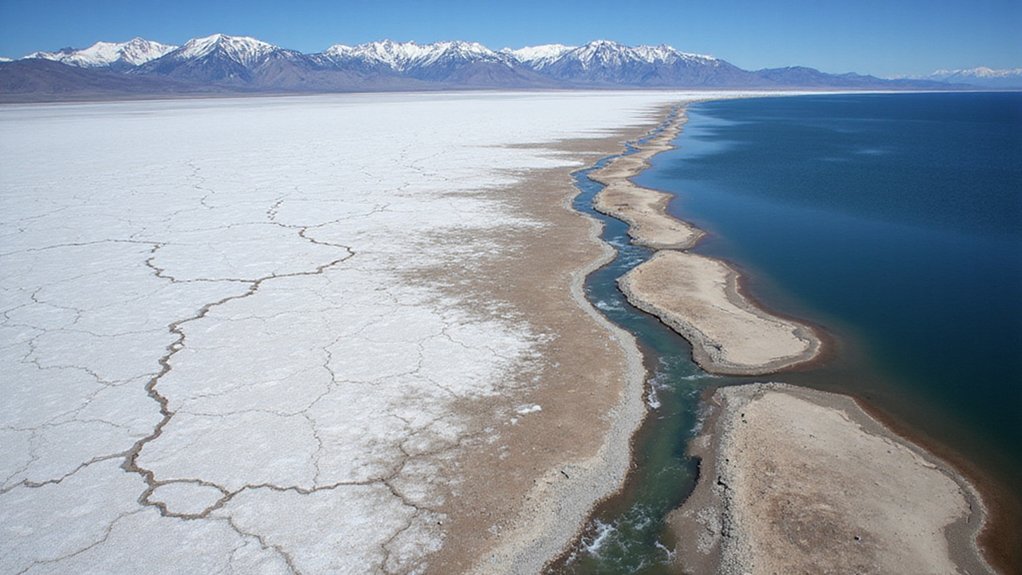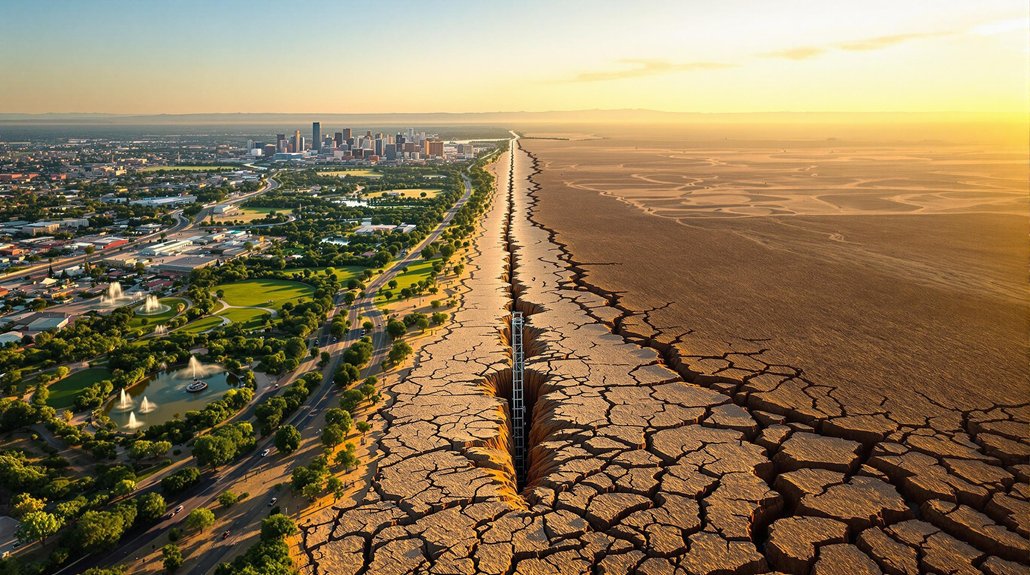As Delhi’s water crisis deepens with each passing season, officials have turned their attention to the Munak Canal—a critical lifeline that’s hemorrhaging precious water. The numbers are staggering. The Delhi Sub-Branch loses nearly 30% of its water, while the Carrier Lined Channel wastes about 5%. That’s millions of gallons literally disappearing into thin air or seeping into the ground. Not exactly ideal for a city perpetually thirsty.
The government hasn’t been completely useless, mind you. They’ve poured ₹500 crores into anti-leakage measures, bringing wastage down from 30% to 5% in some stretches. Pipeline replacements have actually pushed leakage below international norms. Progress!
But recent canal breaches still cost the city 60-70 million gallons daily. Each lost million gallons affects around 21,500 residents. Do the math—that’s a lot of dry taps.
Enter the latest bright idea: covering the entire canal with solar panels. It’s either brilliant or bonkers, depending on who you ask. The plan involves building four-foot walls along both sides of the canal within Delhi and slapping solar panels on top. These panels will shade the water, cutting evaporation losses while generating electricity. Two birds, one stone. Neat trick.
Delhi’s solar canopy gambit—a brilliant cross between environmental ingenuity and desperate water conservation.
Beyond the obvious water-saving benefits, these panels could solve other problems too. No more garbage tossed into the canal by locals who apparently think “water supply” means “convenient trash disposal.” Fewer people falling in accidentally. Less contamination overall. The project mirrors the renewable energy benefits seen in residential applications, where solar installations can offset up to 70-100% of electricity usage.
Seven of Delhi’s nine water treatment plants depend on this canal, so the stakes couldn’t be higher. The current crisis would be significantly worse if Haryana actually released the full 1,050 cusecs of water allocated to Delhi instead of the insufficient 840 cusecs recently observed. Recent production has fallen below 500 MGD, well short of the allocated an essential 550 MGD. Daily monitoring by ADM-SDM level officers helps identify issues before they become catastrophic failures.
Technical challenges remain immense—the design must allow for maintenance while ensuring structural stability. If successful, the project could become a blueprint for other water channels. Delhi officials are betting big on this solar gamble. Will it pay off? The city’s parched millions certainly hope so.
References
- https://archive.aamaadmiparty.org/delhi-government-has-replaced-3500-km-of-pipelines-in-9-years-to-prevent-leakage-in-pipelines-and-wastage-of-water-atishi/
- https://indianexpress.com/article/cities/delhi/water-delhi-shortfall-evaporation-losses-heat-haryana-9382050/
- https://timesofindia.indiatimes.com/city/delhi/delhi-government-plans-to-cover-munak-canal-with-solar-panels/articleshow/122281151.cms
- https://www.hindustantimes.com/cities/delhi-news/canal-breach-leads-to-chaos-in-delhi-s-bawana-101720720033603.html
- https://www.business-standard.com/india-news/north-delhi-water-supply-hit-by-munak-canal-breach-repairs-in-progress-124071200573_1.html
